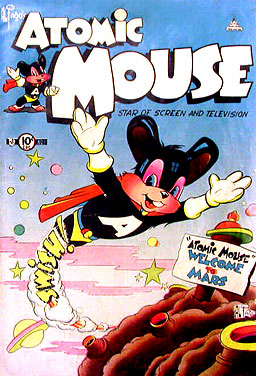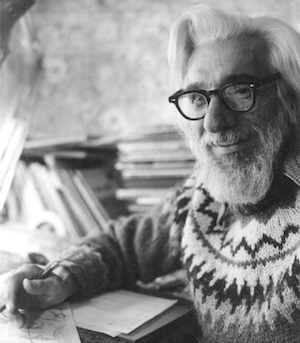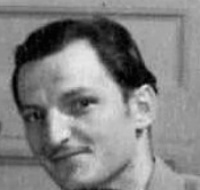
Timely Comics is the common name for the group of corporations that was the earliest comic book arm of American publisher Martin Goodman, and the entity that would evolve by the 1960s to become Marvel Comics.

Atomic Mouse is a talking animal superhero created in 1953 by Al Fago for Charlton Comics.

Fawcett Comics, a division of Fawcett Publications, was one of several successful comic book publishers during the Golden Age of Comic Books in the 1940s. Its most popular character was Captain Marvel, the alter ego of radio reporter Billy Batson, who transformed into the hero whenever he said the magic word "Shazam!".
See also: 1930s in comics, 1950s in comics and the list of years in comics

Miss America is a superhero appearing in American comic books published by Marvel Comics. Created by writer Otto Binder and artist Al Gabriele, the character first appeared in Marvel Mystery Comics #49 in the Golden Age of Comic Books. Madeline Joyce is the first incarnation of Miss America. The character has also been a member of the Invaders, Liberty Legion, and All-Winners Squad at various points in her history.

Bulletman and Bulletgirl are fictional superheroes originally published by Fawcett Comics.

All Select Comics is a 1943–1945 American comic book series published by Timely Comics, the 1940s predecessor of Marvel Comics, during the period fans and historians call the Golden Age of comic books. An omnibus series with several different superhero and other features each issue, it primarily starred Captain America and the original Human Torch, two of Timely's most popular characters, as well as fellow Timely star the Sub-Mariner in several.

Hoppy the Marvel Bunny is a fictional character appearing in American comic books originally published by Fawcett Comics and later DC Comics as a spin-off of Captain Marvel. He was created by Chad Grothkopf (1914–2005), and debuted in Fawcett's Funny Animals #1. A comic book superhero and an anthropomorphic animal, Hoppy has made periodic appearances in stories related to Captain Marvel, today also known as Shazam or The Captain.

National Comics Publications v. Fawcett Publications, 191 F.2d 594. was a decision by the United States Court of Appeals for the Second Circuit in a twelve-year legal battle between National Comics and the Fawcett Comics division of Fawcett Publications, concerning Fawcett's Captain Marvel character being an infringement on the copyright of National's Superman comic book character. The litigation is notable as one of the longest-running legal battles in comic book publication history.

Vincenzo Francisco Gennaro Di Fago, known professionally as Vince Fago, was an American comic-book artist and writer who served as interim editor of Timely Comics, the Golden Age predecessor of Marvel Comics, during editor Stan Lee's World War II service.
Ernest Huntley Hart, also known as H. E. Huntley, was an American comic-book writer and artist best known for creating Marvel Comics' character Super Rabbit as well as co-creating the superhero The Wasp. In addition, he variously wrote, edited and illustrated numerous books on dog breeding and ownership.

Donato Francisco Rico II was an American paperback novelist, screenwriter, wood engraver and comic book writer-artist, who co-created the Marvel Comics characters the Black Widow with plotter Stan Lee and artist Don Heck; Jann of the Jungle with artist Arthur Peddy; Leopard Girl with artist Al Hartley; and Lorna the Jungle Girl with an artist generally considered to be Werner Roth. His pen names include Dan Rico, Donella St. Michaels, Donna Richards, Joseph Milton, and N. Korok.

Vincent Alascia, also known as Nicholas Alascia, was an American comic book artist known for his work on Captain America during the Golden Age of comics, and for his 23-year run as inker on a single creative team, with penciler Charles Nicholas Wojtkowski and writer Joe Gill at Charlton Comics from 1953 to 1976.
Thunderbunny is a comic book about a boy who transforms into a superhero resembling a large pink humanoid rabbit. It was created by Martin L. Greim.

U.S.A. Comics was an American comic-book series published by Marvel Comics' 1930–1940s predecessor, Timely Comics, during the period fans and historians call the Golden Age of comic books.
Super Rabbit may refer to:

Ziggy Pig and Silly Seal are fictional, talking animal comic-book characters created by cartoonist Al Jaffee for Marvel Comics' 1940s predecessor, Timely Comics, during the period fans and historians call the Golden Age of Comic Books.
Mystic Comics is the name of three comic book series published by the company that eventually became Marvel Comics. The first two series were superhero anthologies published by Marvel's 1930-1940s predecessor, Timely Comics, during what fans and historians call the Golden Age of comic books. The third, simply titled Mystic, was a horror fiction-suspense anthology from Marvel's 1950s forerunner, Atlas Comics.

MODOK is a fictional character appearing in American comic books published by Marvel Comics. Created by Stan Lee and Jack Kirby, the character first appeared in Tales of Suspense #93. The first MODOK is George Tarleton, a former employee of Advanced Idea Mechanics (A.I.M.), an arms-dealing organization specializing in futuristic weaponry, who undergoes substantial mutagenic medical experimentation originally designed to increase his intelligence. While successful, the experiments result in him developing a freakishly overdeveloped head and a stunted body, causing the character's signature look and use of a hoverchair for mobility. After the experiments, he kills his creators and takes control of A.I.M. Following Tarleton being changed back to normal, a new independent being created afterward dubs himself MODOK Superior, becoming the enemy of Gwenpool.












